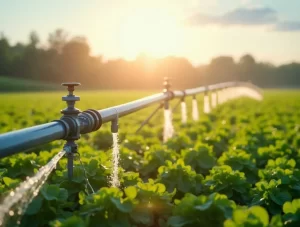PVC vs UPVC vs CPVC Pipe Fittings: Key Differences Explained

Introduction to PVC, UPVC, and CPVC Pipe Fittings
Pipe fittings made from PVC, UPVC, and CPVC materials are essential for modern plumbing systems across residential, commercial, and industrial applications. PVC, or polyvinyl chloride, is widely used for non-pressurized and cold-water systems due to its affordability and ease of installation. UPVC pipes and fittings, also called unplasticized PVC, offer enhanced durability and resistance to corrosion, often preferred for wastewater systems and industrial setups. CPVC pipes and fittings excel in handling high-temperature liquids, making them ideal for hot water plumbing. Understanding the differences between these materials is critical for effective installations and system performance.
What is PVC? Overview and Common Applications
PVC, or Polyvinyl Chloride, is a widely used thermoplastic polymer known for its versatility and durability. It serves as a key material in various industries, especially in plumbing systems, due to its affordability and resistance to corrosion. Unlike UPVC pipes and fittings, PVC contains plasticizers, which enhance its flexibility but make it less rigid than UPVC. This distinction is significant when exploring topics like UPVC vs PVC pipes key differences, uses, and durability.
Common applications of PVC include:
- Plumbing Systems: Used for cold water supply and drainage systems.
- Conduit Pipes: Ideal for protecting electrical wiring.
- Irrigation Systems: Popular in agriculture for water transportation.
- Industrial Applications: Employed for chemical handling due to its chemical resistance.
PVC’s design accommodates multiple installation techniques, as highlighted in guides such as Mastering Pipe Joining Methods: PVC, UPVC, and Plumbing Essentials. It remains a foundational choice in understanding pipe differences and applications.
Understanding UPVC: Features and Typical Uses
Unplasticized Polyvinyl Chloride (UPVC) is a rigid, durable material widely used in plumbing, construction, and irrigation systems. Unlike PVC, UPVC lacks added plasticizers, resulting in enhanced structural strength and resistance to deformation. Its high resistance to weathering, chemicals, and UV light makes it ideal for outdoor applications. UPVC pipes and fittings are commonly used for water drainage, soil waste systems, and cold water plumbing in both residential and industrial settings. They are also corrosion-resistant, lightweight, and cost-effective. Compared to CPVC pipes and fittings, UPVC is less suited for hot water applications. Mastering pipe joining methods for UPVC ensures leak-free performance.
Decoding CPVC: Properties and Where It's Used
Chlorinated Polyvinyl Chloride (CPVC) pipes differ from UPVC pipes and fittings in both chemistry and application. CPVC pipes undergo an extra chlorination process, enhancing their ability to withstand higher temperatures. This makes them ideal for applications involving hot water plumbing, positioning them as a top choice highlighted in “5 reasons why CPVC pipes are the best choice for hot water plumbing.” CPVC is non-toxic, corrosion-resistant, and exhibits excellent chemical stability, often utilized in both residential and industrial settings.
Common uses include:
- Hot and cold water distribution systems
- Industrial chemical handling
- Fire sprinkler systems
The versatility of CPVC supports its widespread use compared to other options when “mastering pipe joining methods PVC, UPVC, and plumbing essentials.” Its lightweight yet durable nature provides ease of installation, making it prominent in domestic and industrial plumbing systems.
Material Composition: How PVC, UPVC, and CPVC Differ
PVC, UPVC, and CPVC pipe fittings share a polyvinyl chloride base but differ in chemical composition and processing, influencing their applications. PVC (Polyvinyl Chloride) is flexible, containing plasticizers that make it ideal for general plumbing but not suitable for hot water systems. UPVC (Unplasticized PVC), on the other hand, omits plasticizers, resulting in a rigid, durable material widely used in residential and industrial applications—especially in “UPVC pipes and fittings for long-term structural use.” CPVC (Chlorinated PVC) undergoes chlorination, enhancing its temperature and chemical resistance, making it the preferred choice for hot water systems, as outlined in “5 reasons why CPVC pipes are the best choice for hot water plumbing.”
Temperature Tolerance: Comparing Performance in High and Low Heat
When discussing temperature tolerances, CPVC pipes and fittings stand out for their ability to handle high heat, making them the top choice for hot water plumbing. CPVC pipes tolerate temperatures up to 200°F, an essential feature for residential and industrial applications requiring heat resistance. Conversely, UPVC pipes and fittings—designed primarily for cold water supply and drainage—lack the thermal resilience of CPVC, performing poorly in high-temperature environments. PVC pipes fall in between, offering moderate durability but limited heat resistance.
For efficient applications, such as mastering pipe joining methods or installing UPVC pipe fittings, understanding CPVC vs UPVC is crucial for selecting materials based on thermal demands.
Durability and Lifespan: Strengths and Weaknesses of Each Type
PVC, UPVC, and CPVC pipes and fittings differ significantly in durability. PVC pipes are lightweight but susceptible to UV damage, making them ideal for indoor but less effective for prolonged outdoor use. UPVC pipes and fittings, due to their rigid structure and absence of plasticizers, resist corrosion and weathering, making them suitable for industrial and home applications outlined in the ultimate guide to UPVC pipes and fittings. CPVC pipes excel in hot water plumbing, tolerating temperatures up to 200°F, offering durability for thermal applications as highlighted in top 10 advantages of using CPVC pipes for plumbing. However, CPVC may have a shorter lifespan when exposed to extreme environmental stress compared to UPVC.
Chemical Resistance: Which Pipe Material Handles Chemicals Best?
Among PVC, UPVC, and CPVC pipe fittings, chemical resistance varies significantly, often influencing material selection for specific applications. PVC pipes offer moderate chemical resistance but are less suited for handling aggressive chemicals due to potential degradation. In contrast, UPVC pipes and fittings, known for their enhanced rigidity and absence of plasticizers, exhibit superior resistance to most acids, alkalies, and salts, making them ideal for industrial environments.
CPVC pipes and fittings, however, stand out in handling chemicals, especially at higher temperatures. This advantage is critical for applications involving hot, corrosive liquids, explained in-depth in “5 Reasons Why CPVC Pipes Are the Best Choice for Hot Water Plumbing.” Understanding CPVC vs. UPVC highlights CPVC’s unique tolerance to solvents and oxidizers, offering durability where traditional UPVC or PVC might fail.
Cost Comparison: Is PVC, UPVC, or CPVC More Affordable?
When examining PVC, UPVC, and CPVC pipe fittings, cost differences depend mainly on the material composition and intended applications. PVC pipes are the most affordable option, often used for non-pressurized or cold-water systems due to lower material costs. UPVC pipes and fittings, with enhanced durability and chemical resistance, are slightly pricier than PVC, ideal for both residential and industrial settings, as highlighted in “The Ultimate Guide to UPVC Pipes and Fittings for Home and Industrial Use.”
On the other hand, CPVC pipes and fittings, designed for superior temperature and pressure tolerance, particularly hot-water plumbing (see “5 Reasons Why CPVC Pipes Are the Best Choice for Hot Water Plumbing”), are the most expensive. While costlier, CPVC justifies its price through reliability in extreme conditions.
Environmental Impact: Sustainability of PVC, UPVC, and CPVC
PVC, UPVC, and CPVC pipes and fittings differ significantly in terms of environmental sustainability. PVC manufacturing involves the use of chlorine and additives, which may raise concerns regarding recyclability and emissions. UPVC, often referred to as an eco-friendlier alternative in “the ultimate guide to UPVC pipes and fittings for home and industrial use,” eliminates plasticizers, offering improved recyclability and a reduced environmental footprint. CPVC, valued for its durability and thermal resistance in “5 reasons why CPVC pipes are the best choice for hot water plumbing,” requires more energy to produce due to additional chlorination processes. All three materials may release toxins during incineration, but advancements in recycling are mitigating the impact.
Installation and Maintenance: Challenges and Considerations
When evaluating PVC, UPVC, and CPVC pipe fittings, installation and maintenance considerations are crucial to informed decision-making. UPVC pipes and fittings, known for their rigidity, require precise cutting and gluing, as explained in “How to Install UPVC Pipe Fittings: A Step-by-Step Guide.” They are ideal for both home and industrial use, but their lack of flexibility can pose challenges in tight spaces. CPVC pipes and fittings excel in hot water applications, as detailed in “5 Reasons Why CPVC Pipes Are the Best Choice for Hot Water Plumbing,” yet require special solvents for proper joining, especially in high-temperature systems.
PVC pipes, while easier to handle, are less durable under prolonged sunlight or heat exposure, necessitating periodic inspection. In mastering pipe joining methods, understanding the proper glues, primers, and tools is vital to avoid leaks. Key maintenance challenges include preventing cracks in UPVC, monitoring CPVC for deformation under excessive heat, and ensuring PVC remains free of blockages. For durability across applications, the distinctions between CPVC vs UPVC must guide material selection. Enhanced UV resistance for UPVC or heat resistance for CPVC ensures long-term function with minimal repairs.
Common Applications: Which Pipe Material Suits Your Needs?
Choosing the right material, whether PVC, UPVC, or CPVC, depends on usage-specific requirements. Here’s how their applications differ:
- PVC Pipes: Frequently used for drainage systems, irrigation, and cold-water plumbing. Their lightweight nature makes them suitable for DIY projects and temporary setups.
- UPVC Pipes and Fittings: Ideal for home and industrial settings due to their durability and corrosion resistance. Common for potable water systems, electrical conduits, and industrial fluid transport.
- CPVC Pipes and Fittings: Preferred for hot and cold-water plumbing. CPVC excels in handling high temperatures, making it a top choice for hot water plumbing in domestic and commercial environments.
Understanding “UPVC vs PVC Pipes: Key Differences & Uses” and “CPVC vs UPVC: Understanding the Differences and Applications” helps ensure appropriate material selection.
Pros and Cons: A Quick Comparison of PVC, UPVC, and CPVC
PVC Pipes and Fittings
Pros:
- Lightweight and cost-effective, making them ideal for everyday plumbing tasks.
- Easy to install with standard pipe joining techniques.
- Suitable for cold water transport in residential and outdoor applications.
Cons:
- Lower durability compared to UPVC and CPVC pipes.
- Not ideal for hot water plumbing due to poor heat resistance.
UPVC Pipes and Fittings
Pros:
- Highly durable, corrosion-resistant, and eco-friendly.
- Known for versatility in home and industrial use.
- Ideal for chemical flow, wastewater systems, and outdoor applications.
Cons:
- Limited in temperature resistance; unsuitable for hot water plumbing.
- Slightly heavier than PVC, impacting ease of transportation.
CPVC Pipes and Fittings
Pros:
- Superior heat tolerance, ideal for hot water and plumbing systems.
- Resistant to harsh chemicals; perfect for industrial and residential use.
- Offers better longevity compared to PVC and UPVC.
Cons:
- Costlier than PVC and UPVC pipes.
- Requires specific tools and guides for installation, such as step-by-step setups unique to CPVC.
Key Takeaways: Making the Right Choice for Pipe Fittings
When selecting pipe fittings, understanding the distinctions between PVC, UPVC, and CPVC materials is crucial. Each material serves unique purposes based on its properties and applications:
- PVC Pipes: Suitable for general water transportation, drainage, and non-corrosive environments. Flexible and lightweight but limited in high-temperature handling.
- UPVC Pipes and Fittings: Rigid, durable, and corrosion-resistant, making them ideal for both home and industrial use. They excel in cold water systems and exterior applications due to UV resistance.
- CPVC Pipes and Fittings: Perfect for hot water plumbing, with a high thermal tolerance. Known for long-term durability and strength, they are favored for residential and industrial hot water systems.
Transitioning between materials requires mastering pipe joining techniques to ensure leak-free connections. Always evaluate the intended use, durability, and environmental factors before deciding between UPVC vs PVC pipes or CPVC vs UPVC for specific needs. Proper installation further enhances performance and longevity.
Conclusion: PVC vs UPVC vs CPVC – Final Thoughts
When comparing PVC, UPVC, and CPVC pipes and fittings, several factors stand out that influence their specific applications. PVC is lightweight, cost-effective, and commonly used for drainage and irrigation systems, making it a versatile choice for non-pressurized applications. UPVC, known for its rigid structure and chemical resistance, is ideal for both home and industrial use, particularly for cold water systems and outdoor installations. CPVC, on the other hand, excels in durability, high-temperature tolerance, and suitability for hot water plumbing, making it the best choice for domestic and industrial hot water systems. Transitioning between these materials requires mastering pipe joining methods and understanding their unique properties, as each serves distinct purposes.
Stay on the forefront of industry trends by checking out our latest content
Stay ahead with our latest content, designed to keep you informed on the newest industry trends and insights. Discover valuable updates that help you lead in your field.

Trusted uPVC Pipes Manufacturers for India’s Top Contractors
Introduction: The Surge in Demand for uPVC Pipes Among Top Contractors in India The construction and infrastructure sectors in India have witnessed a significant transition toward sustainable and long-lasting materials.

Top Innovations in Agricultural Pipe Fittings for Water Savings [2025]
Introduction to Agricultural Pipe Fittings and Water Sustainability Agricultural pipe fittings play a pivotal role in building efficient irrigation systems, crucial for modern farming practices. By exploring the versatility of

Expeart Tips from MDPE Pipe Fittings Manufacturers to Avoid Failures
Expeart Tips from MDPE Pipe Fittings Manufacturers to Avoid Failures Understanding MDPE Pipe Fittings: An Overview MDPE (Medium Density Polyethylene) fittings, used extensively in gas and water systems, offer strong,
Request a Free Consultation
Get personalized plumbing solutions with a free consultation from Fitwell.

